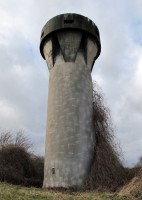Lignes de vie
Jean-Michel Botquin
It is likely that the human being began to designate quantities with his fingers, before thinking of recording it somewhere. And we agree today on the fact that, since the Palaeolithic, carving notches on animal bones or stone, could be a first counting means, as when we count on fingers the days passing by, the lunar months, the captured preys. This is a first theory of numbers and units, an elementary arithmetic. It is equally certain that with the use, man realized aligning numerous lines leads to a risk of increasing errors. Our visual capacity is limited: beyond four lines, everything blurs. Our frontal cortex counts one to four directly. When the considered amounts are more important, another area of our brain, a deeper one, takes over. Emphasis will therefore be on estimating the result and not on counting directly. The solution will be to avoid aligning more than four consecutive strokes: number five becomes four notches crossed by a bar and then a crossed line, finally a V.
The graph of this simple idea, so simple that it now seems timeless, quickly sprung up in the mind of Marie Zolamian, invited to intervene at the Fort of Flémalle as part of the commemorations of the Great War centenary. The challenge is a public procurement; it will remain beyond the events that place the first days of August 2014, the twelve forts that surround Liège under the glare of a current collective memory. Marie Zolamian has chosen to focus the intervention on the ventilation and surveillance tower of the fort, built while the modernization of the fort during the interwar period.
This ventilation tower, standing a bit apart from the massive fort, lookout visible for miles around, marked by the vicissitudes of time, punctuates Flémalle landscape. Marie Zolamian proposed to engrave, from the base of the tower to the cupola, a myriad of this universal graph, four notches crossed by a bar. This is a theory of numbers, the number of livings and deaths counted by unit, deaths in the assault of the forts of Liege, in the Great War, of all wars. All wars have their accounting, the one of the horror, of pain, of absurdity, of destruction, of reconstruction when all accounts are made. These graphs are memorial traces. Their design calls for transcription, to transmission. They are also as many stitches healing the tower. Above all, each engraved notches, is a sign of intelligence, of an ability to create and to reason, therefore to renewed hopes. Sober, efficient, effective, the intervention of Marie Zolamian touches the universal, the emergence of a creative thinking.

